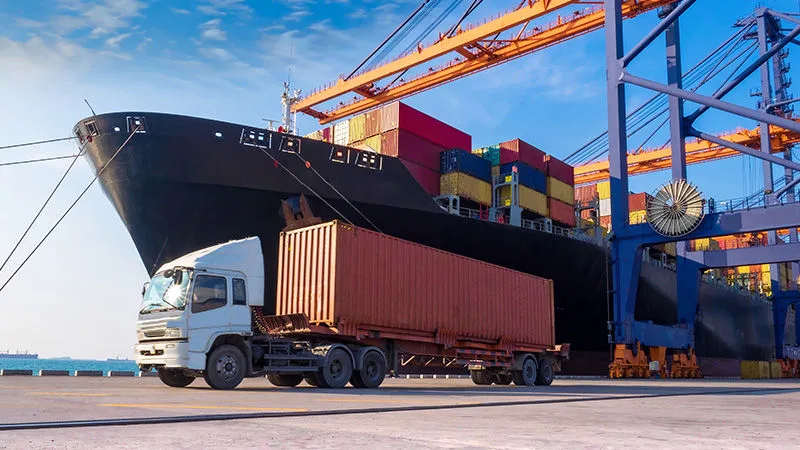 Guideline
Guideline How to Optimize Your Construction Site Management
The demand for construction has never been greater with the global population predicted to hit 9 billion by 2050—and two out of every three people living in cities by 2050. Construction is already one of the largest industries, accounting for more than 11% of global GDP.
However, underlying challenges in productivity, profitability, labor, safety, and sustainability could derail the industry’s growth. We will show some of the most significant challenges in the construction industry, and how to optimize all the processes with construction software to avoid typical mistakes.
What is Construction Site Management?
Construction projects are highly structured, whether that is building a shopping mall or a family home in the suburbs. They have a lot of moving parts, from design and planning to scheduling and building itself, and people that must be precisely coordinated.
While project management is defined as managing resources over the life cycle of a construction project through various tools and methodologies, construction site management usually includes a wider variety of components and can interact with a variety of different constituents in the lifetime of a project as well, from architecture to engineering to city planning.
5 Major Challenges Facing The Construction Industry & Tips for Improving
A large number of construction businesses are trying to deal with several problems. The good news is that the challenges the construction industry faces nowadays are typical. And project owners, as well as managers, could easily reduce the risk of unexpected problems, and increase the overall productivity and construction project profitability. Take advantage of digital technologies and IT transformation! Technologies such as construction accounting software or construction estimating software plays a vital role in developing the industry in 2022.
Challenge #1: poor productivity and profitability
Solutions: Task & Team Construction Site Management Software, Construction Scheduling Software, ERP (Enterprise Resource Planning)
While other industrial businesses have benefited from a 100% increase in labor productivity, productivity within the construction industry has remained stagnant over the last 50 years.
According to a Construction Owners Association of America (COAA) study, 63% of direct labor time on mega-construction projects is spent waiting for project materials and equipment, coming to the area, and planning how to do the work.
The functionality of task & team construction management software, as well as ERP solutions, help to solve similar problems in on-site construction management, offering alike core features:
- Workflows. Construction projects include numerous documents that are distributed and shared between stakeholders. The bigger the size of the project and the number of parties involved, the more files, tasks, and assignees the flow would include.
- Data Synchronization. A construction task & team construction site management tools should be cloud-based so that teams can access the updated data remotely from anywhere.
- Daily Logs and Task Trackers. It’s critically important for the business owner or project manager to be able to track all the information on the work done at the site. Some construction project management software offers QR scanning to automate daily report tracking.
- Reporting. Construction reports summarize all the statistics on project budget, deadlines, expectations, and spending information, allowing the analysis of performance and providing quality control.
Challenge #2: low employee engagement
Solutions: Onboarding & Personal Development App Solutions
Engagement is the physical, emotional, and intellectual state that motivates employees to do their work. Even 10–15 years ago, employers were convinced that good salary and working conditions, as well as timely payment, are a guarantee of employee involvement in the work process.
Now the realities are quite different. People want more partnerships from the employer. They need to develop in the company and achieve the main professional and personal goals. Now perks are associated more with “investment in the brain” and personal growth: they support innovative thinking, increase the return of employees and help the business grow. For example, Starbucks pays its employees to study at the University of Arizona. It’s a nice perk in addition to free unlimited coffee.
Such benefits are not about a basic need according to Maslow’s pyramid, but about more global things that motivate employees to develop. This significantly distinguishes such companies from other employers. We’ve prepared other top tips on how to increase project teams’ engagement and reduce employee turnover.
- Share the company’s mission and values. According to Officevibe, only 40% of employees are aware of their organization’s strategy and goals. This is a very small number considering the fact that you are much more likely to keep a project team that shares your vision.
- Conduct onboarding programs. According to research, 26% of new employees leave companies that lack onboarding and training. Another 44% of survey participants say they thought about leaving within the first month after employment. Onboarding programs impact productivity and reduce turnover—according to Glassdoor, onboarding companies increase new employee retention by 82% and their productivity by more than 70%.

You should also provide a training manual for new hires. Create sections such as “How We Start Jobs”, “Who Is Responsible For What”, and “How To Handle Difficult Situations”. If possible, do video-based tutorials on each section.
A good practice would be to use gamification, AR, and VR technologies. For example, Siemens AG uses a virtual reality program that simulates work on gas and oil rigs. It explains what actions can become lethal and how to act in case of a mistake.
Challenge #3: safety
Solutions: GPS Tracking, Live Information Streams, Historical Tracking
For years, construction has led all industries in the total number of worker deaths. 20% of worker deaths in the US are in the construction sector, although employees make up only 6% of the workforce. Moreover, the median time away from work after suffering an injury or illness on the job in construction is ten days.

Ongoing training is the number one way to keep workers safe on the construction site as well as to improve a company’s reputation and attract top talent by showing an interest in the well-being of its employees.
Technology is also lending a hand to the construction industry when it comes to site safety. For example, GPS tracking will show exactly where your project team is. Historical tracking helps to see detailed trip replays, travel distances, and previous events. Live streams—to monitor assets with activities and events in real-time through live streams.
Challenge #4: poor communication
Solutions: Task Management & Team Management Software
Communication is critical when you manage multiple job sites and juggle numerous completion deadlines. Tasks that are badly communicated will have your employees wasting time, effort, and even materials on work that shouldn’t be done in the first place.
Important info: companies often use Slack, Skype, Microsoft Teams, Google Drive, Dropbox, email, and other tools at the same time. If they are not structured, it’ll be difficult to convey information to employees. The main goal at this stage is to limit the number of channels that will allow the team to stay in touch and quickly find the information they need.
Here are a few tools that might come in handy:
- Implement a core corporate channel such as Slack or Facebook Workplace.
- Use cloud technologies: for example, Google Drive or Dropbox.
- Move to a single platform for mail, calendar, and documents, such as Google or Microsoft.
Slack is an example of a cloud-based collaboration tool that offers real-time communication through channels that can be a team- or project-specific

Challenge #5: scattered data
Solutions: Data & Document Management System, Contractor Management Software
Data collection can help teams bring the different parts of a project together, make a job more efficient, and give real-time information that helps with construction project planning and progress. It is essential to have a strategy and the right tools that will help to collect and use data. Data & document management systems can be used to organize and store contracts, blueprints, permits, and other documents necessary for day-to-day operations.
Which technologies can improve your business?
Take a look at the options below. Are there any that stand out to you as a good fit for your company? Draw up a plan on how you’d implement it in the next few months:
- If you are a new business, get a simple messaging app that’ll ensure your team’s success in their first few projects.
- If you are a growing business, search for a vendor which is specialized in BIM solutions development. It will take your business to the next step in terms of efficiency.
- If you are an established company looking for a competitive edge, consider a few technologies: AR/VR can take an already efficient workforce to the next level, real-time data analysis will make you more effective as a construction manager, and drones provide a helping hand so your workers can focus on more important tasks.
Today, the construction industry is at a crossroads. Project owners that will transform their business processes can be confident in the growth of their business. Businesses that fail to take the challenges seriously, however, will face an uphill battle for viability.
Why Choose Intelvision As a Construction Software Development Vendor
More than half of construction project managers spend 2% or less of their budget on IT, and only 42% of construction managers even have a dedicated technical staff. Are you interested in increasing productivity and improving the performance of your sites? Feel unconfident about what technology to implement or how to do it? Bring Intelvision on board for mission success!
We are a fast-growing innovative construction software development company that offers full-cycle IT solutions and consulting services. Let our developers help you enjoy improved construction project management, and efficiency, ramp up communication flexibility, manage resources effectively, cut down the operational costs and gain value-added digital capabilities.
Why choose Intelvision as your custom software development partner?
- We’ve partnered with hundreds of companies from the USA, Canada, UK, Germany, Austria, Switzerland, etc. over the past 4+ years to boost development capabilities.
- Our portfolio has multiple projects for construction, fintech, supply chain and logistics, healthcare, retail, and other industries.
- Over the years, we have successfully built long-term partnerships with leading tech companies and enterprises.
Among our values are empathy, open-mindedness, flexibility, entrepreneurship, honesty, and reliability. We care about the work we do and its impact. We are curious and always willing to look at the situation from a different perspective. At Intelvision, we cut out bureaucracy, hidden agendas, and favoritism. Instead, we are always ready to share information, and we are open to feedback. Moreover, we treat every project as our small enterprise, and this helps us deliver maximum value to our clients.
Get started today, and start transforming your business into a successful project tomorrow! Contact us to discuss a future project and reach your software development goals!



















